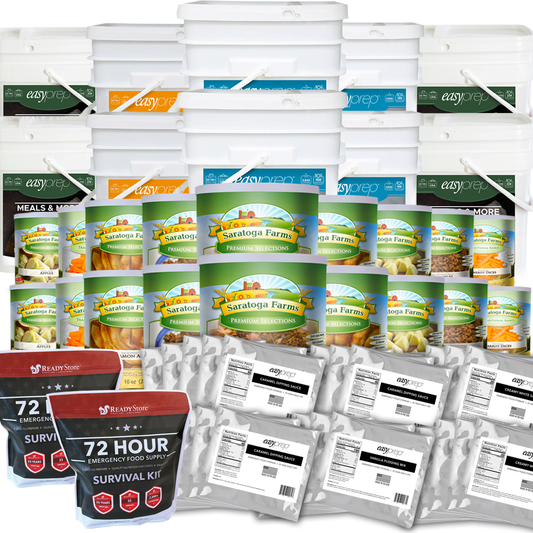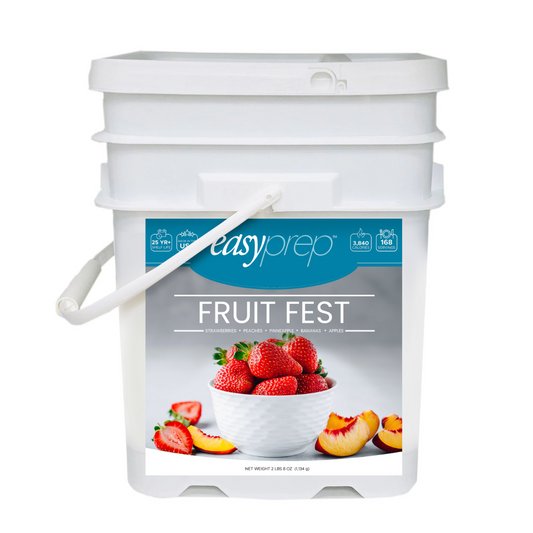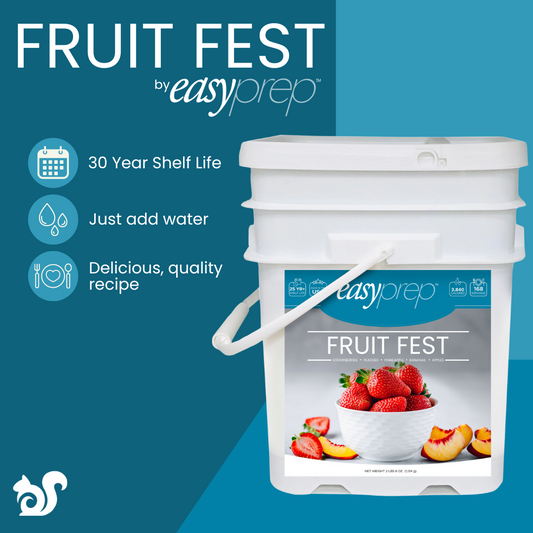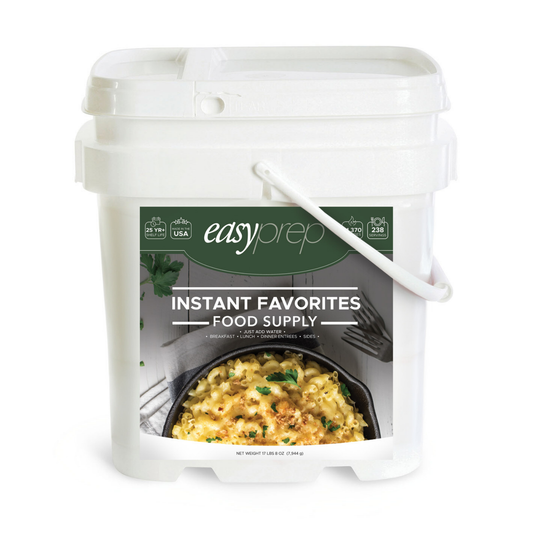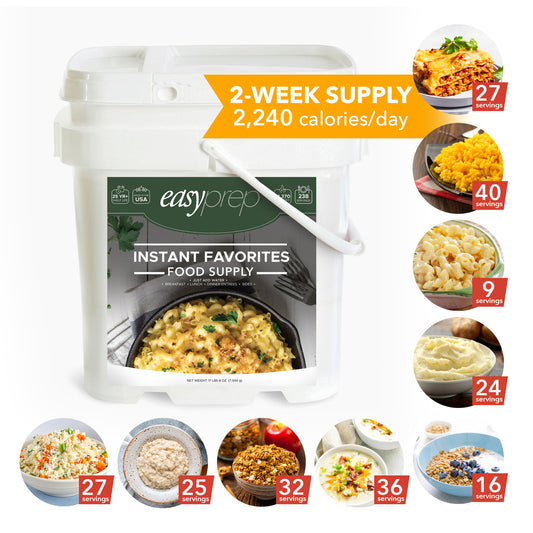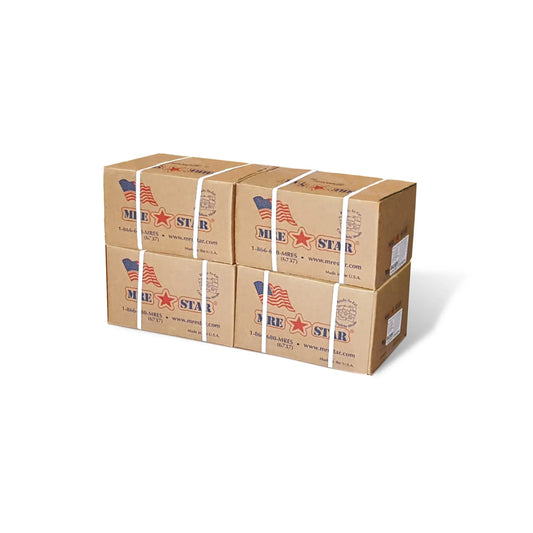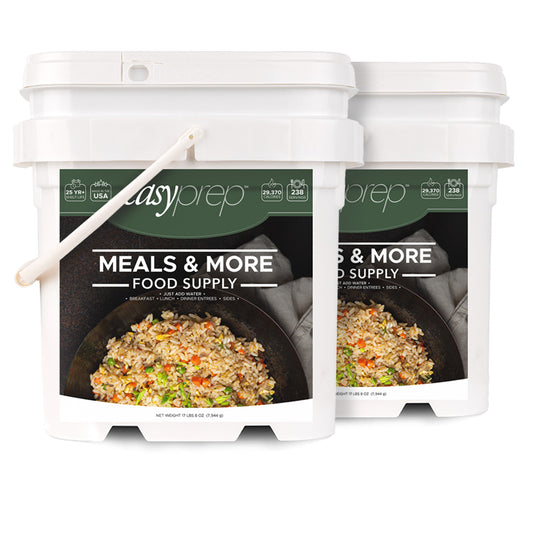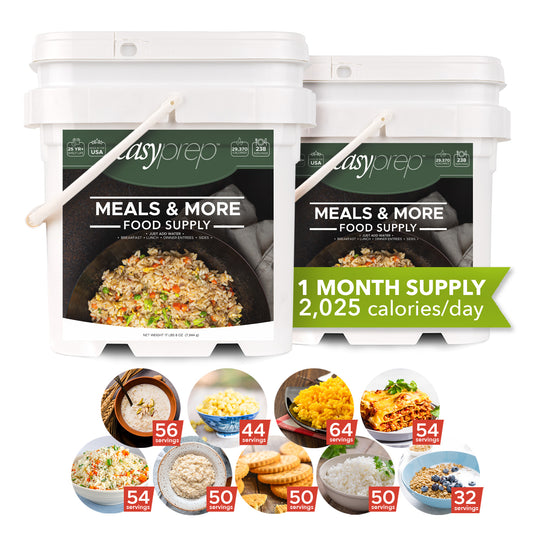How Much Food Storage Do I Need?
15 Sep 2013
You know that food storage is important. But where do you begin? You might be asking yourself, "How do I start? And how much do I need?"
 Like most worthwhile endeavors there is a learning curve when it comes to food storage, but don’t let that keep you from starting! Too often the perceived confusion and uncertainty of starting keeps individuals and families from being prepared. This post will take some of the pressure off of starting your food storage and help you understand how much you need.
Like most worthwhile endeavors there is a learning curve when it comes to food storage, but don’t let that keep you from starting! Too often the perceived confusion and uncertainty of starting keeps individuals and families from being prepared. This post will take some of the pressure off of starting your food storage and help you understand how much you need.
Food Storage Baby Steps
Right off the bat, one important factor to realize is that you don’t need it all right away. You can start small by purchasing a few extra food items you buy during your regular shopping trips to build a few days and weeks worth of storage. Take your time as you expand your food storage to first include the more basic and fundamental staples that will expand your storage to last several months to the ultimate goal of a year's worth of food. This helps spread out the cost and work over a longer period of time, offsetting any buyer's remorse that could come from impulsive, massive purchases.
As your food storage begins to grow, it becomes more important to finalize an end goal. The amount of food storage you need depends entirely on how many people you are storing food for. The numbers below represent the basic needs of a single person for a year supply. These items are going to be the first step of your food storage goal.
Grains are your foundation for a wide variety of foods you can make and are high in nutritional value. Rice and noodles act as the base for countless dishes, and there are numerous breads, cakes, tortillas and deserts that require wheat and flour. Be sure the recipes you are gathering include grains and acclimate your family to eating these dishes.
Fats and Oils - Don't let the word fat scare you away, because fat is an essential part of a healthy diet and a fantastic source of calories (which are in great demand in emergency situations). It is important to note fats and oils don't store as long and need to be rotated out with greater frequency.
Legumes - If meat is scarce (as it often is in emergency situations), legumes are a great stand-in offering high doses of protein, fiber and iron. Not all legumes share the same nutrient profile, but a healthy combination of these recommended legumes in your diet will do the trick.
Whether in dry or liquid form, sugars are simple carbohydrates that add a recognizably sweet taste to anything they are added to. Luckily, commercially-available sugars have an indefinite shelf life thanks to their strong resistance to microbial growth. Even when sugars harden or grow lumpy, they are still safe to use.
Many people are surprised to find out powered milk is made from pasteurized, fresh milk (usually skim). When milk is concentrated and heated, the water and dry milk particles separate, leaving a substance perfect for long term storage. Be sure the milk you are purchasing for your storage is real milk and not a milk alternative.
These are the key ingredients that turn your wheat into bread or flour into dough. Your stored grains will be nearly useless if you don't have these necessary essentials - that's why they call them essentials!
The Next Steps You may have noticed a few important food groups absent from the list — fruits, vegetables and meats. These foods can all be easily purchased and stored as freeze dried items. Not only do these items add flavor and much-needed variety to your meals, they provide certain nutrients that simply aren’t found in the simple grains and cooking essentials.
foods can all be easily purchased and stored as freeze dried items. Not only do these items add flavor and much-needed variety to your meals, they provide certain nutrients that simply aren’t found in the simple grains and cooking essentials.
As you can see there is a lot to keep track of and once you start expanding your food storage to include these bulk items, be sure to keep an up-to-date inventory of everything you have. Careful record keeping is crucial in gathering the necessary amount of food storage for your family. Additionally, it is vitally important to know how to use the food you are storing. Cooking and experimenting with your food storage long before you need it ensures the food’s usability in emergency situations. One last tip: if you know there is something your family doesn’t like, replace it with something else or make up for it by storing extra foods you know your family will enjoy. Knowing how much you have and how to use your food storage transforms it from just storage to actual food.
 Like most worthwhile endeavors there is a learning curve when it comes to food storage, but don’t let that keep you from starting! Too often the perceived confusion and uncertainty of starting keeps individuals and families from being prepared. This post will take some of the pressure off of starting your food storage and help you understand how much you need.
Like most worthwhile endeavors there is a learning curve when it comes to food storage, but don’t let that keep you from starting! Too often the perceived confusion and uncertainty of starting keeps individuals and families from being prepared. This post will take some of the pressure off of starting your food storage and help you understand how much you need.Food Storage Baby Steps
Right off the bat, one important factor to realize is that you don’t need it all right away. You can start small by purchasing a few extra food items you buy during your regular shopping trips to build a few days and weeks worth of storage. Take your time as you expand your food storage to first include the more basic and fundamental staples that will expand your storage to last several months to the ultimate goal of a year's worth of food. This helps spread out the cost and work over a longer period of time, offsetting any buyer's remorse that could come from impulsive, massive purchases.
As your food storage begins to grow, it becomes more important to finalize an end goal. The amount of food storage you need depends entirely on how many people you are storing food for. The numbers below represent the basic needs of a single person for a year supply. These items are going to be the first step of your food storage goal.
 |
 |
||
Grains are your foundation for a wide variety of foods you can make and are high in nutritional value. Rice and noodles act as the base for countless dishes, and there are numerous breads, cakes, tortillas and deserts that require wheat and flour. Be sure the recipes you are gathering include grains and acclimate your family to eating these dishes.
 |
 |
||
Fats and Oils - Don't let the word fat scare you away, because fat is an essential part of a healthy diet and a fantastic source of calories (which are in great demand in emergency situations). It is important to note fats and oils don't store as long and need to be rotated out with greater frequency.
 |
 |
||
Legumes - If meat is scarce (as it often is in emergency situations), legumes are a great stand-in offering high doses of protein, fiber and iron. Not all legumes share the same nutrient profile, but a healthy combination of these recommended legumes in your diet will do the trick.
 |
 |
||
Whether in dry or liquid form, sugars are simple carbohydrates that add a recognizably sweet taste to anything they are added to. Luckily, commercially-available sugars have an indefinite shelf life thanks to their strong resistance to microbial growth. Even when sugars harden or grow lumpy, they are still safe to use.
 |
 |
||
Many people are surprised to find out powered milk is made from pasteurized, fresh milk (usually skim). When milk is concentrated and heated, the water and dry milk particles separate, leaving a substance perfect for long term storage. Be sure the milk you are purchasing for your storage is real milk and not a milk alternative.
 |
 |
||
These are the key ingredients that turn your wheat into bread or flour into dough. Your stored grains will be nearly useless if you don't have these necessary essentials - that's why they call them essentials!
The Next Steps You may have noticed a few important food groups absent from the list — fruits, vegetables and meats. These
 foods can all be easily purchased and stored as freeze dried items. Not only do these items add flavor and much-needed variety to your meals, they provide certain nutrients that simply aren’t found in the simple grains and cooking essentials.
foods can all be easily purchased and stored as freeze dried items. Not only do these items add flavor and much-needed variety to your meals, they provide certain nutrients that simply aren’t found in the simple grains and cooking essentials.As you can see there is a lot to keep track of and once you start expanding your food storage to include these bulk items, be sure to keep an up-to-date inventory of everything you have. Careful record keeping is crucial in gathering the necessary amount of food storage for your family. Additionally, it is vitally important to know how to use the food you are storing. Cooking and experimenting with your food storage long before you need it ensures the food’s usability in emergency situations. One last tip: if you know there is something your family doesn’t like, replace it with something else or make up for it by storing extra foods you know your family will enjoy. Knowing how much you have and how to use your food storage transforms it from just storage to actual food.


